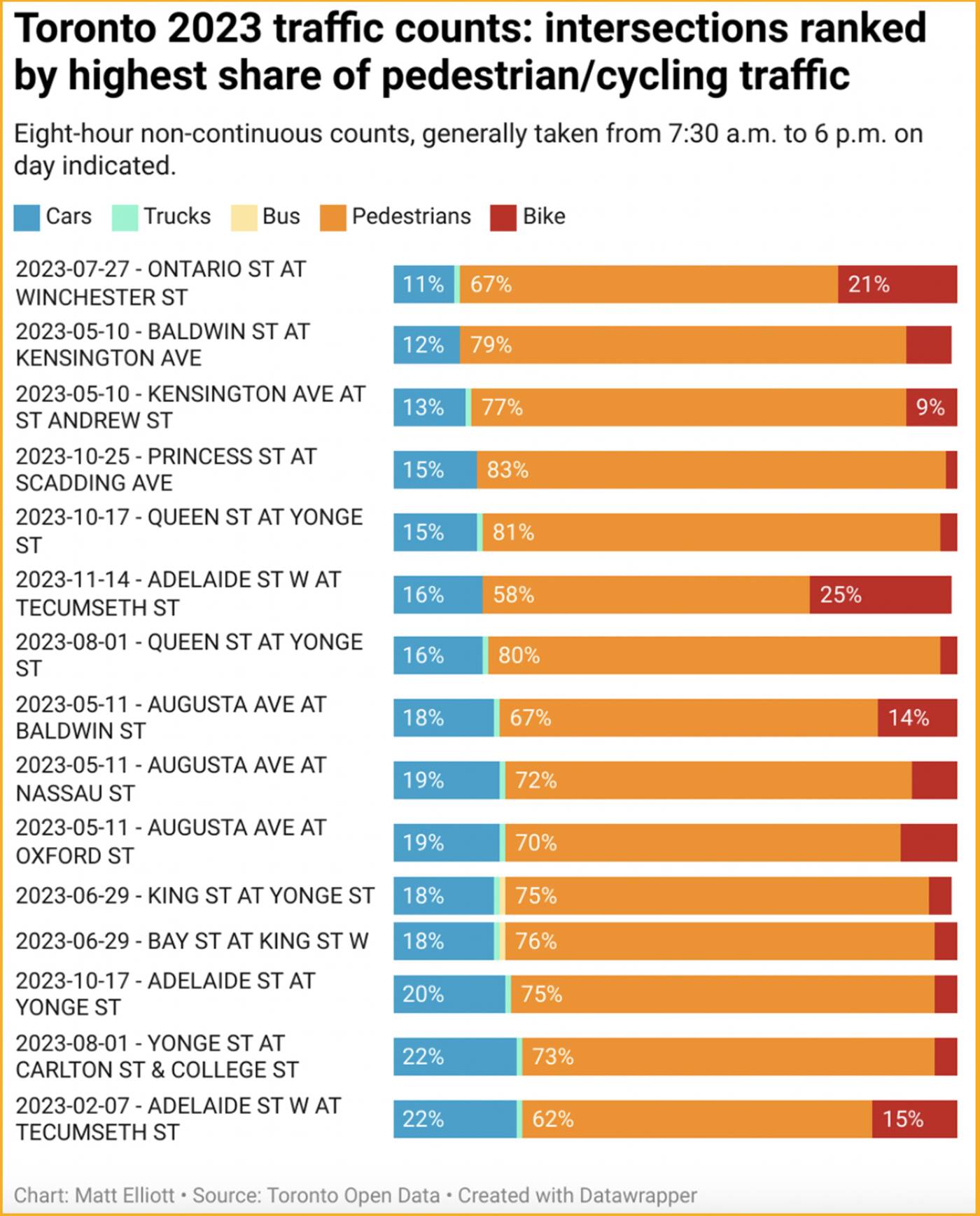
People vastly outnumber cars at these Toronto intersections
As Toronto contemplates how much it wants to prioritize motorists over other road users in future development, a new analysis is shedding light on key parts of the city where pedestrians far outnumber cars.
Municipal politics pundit Matt Elliott broke down a ton of traffic data from intersections across the city in the latest edition of his weekly City Hall Watcher newsletter, including the types of traffic.
Residents may be surprised to know that bustling, often gridlocked corners like Yonge and College, Yonge and Queen, Yonge and King and Bay and Bloor are among those that host up to seven times more pedestrians than drivers on any given day.
.@GraphicMatt has put together city data on mode share at intersections across the city.
— How-Sen (@HowSenChong) March 12, 2024
I’ve mapped all the intersections where pedestrians represent 50% or more of all traffic.
Pedestrians typically have no more than 33% of road space.
Original data: https://t.co/im9RgKULM7 https://t.co/aOyFfgvPaO pic.twitter.com/GlsgBEeF8C
The biggest gap between the two traffic types in 2023 — as measured during continuous eight-hour windows — was at Baldwin Street and Kensington Avenue in Kensington Market, where a whopping 79 per cent of people passing through were on foot, compared to just 12 per cent in car and nine per cent on bike.
Also high on the list were Ontario Street at Winchester Street in Cabbagetown (67 per cent pedestrian vs. 11 per cent car and 21 per cent bike), Princess Street at Scadding Avenue in St. Lawrence (83 per cent pedestrian/15 per cent car/two per cent bike) and Yonge at Queen (81 per cent pedestrian/15 per cent car/four per cent bike).
On the flip side, busy spots like Kennedy and Lawrence, Woodbine and Steeles, and Allan Road and Sheppard had a far higher proportion of cars to other road users last year, with motorists representing over 95 per cent of traffic, on average, at some major intersections.

Chart from the latest edition of City Hall Watcher, showing the intersections in the city that see the highest share of pedestrian and cyclist traffic.
Cycling was measured to be the most popular at Richmond and Tecumseth, as well as Palmerston and Lennox, where cyclist totals outnumbered cars (36 per cent of traffic vs. 31 per cent, and 30 per cent of traffic vs. 25 per cent).
Cyclists are also prevalent at Bay and Bloor, Bloor and Palmerston, Bay and Herrard, and Yonge and Bloor, which had the most cyclists last year by count, though Elliott notes that "not all intersections are counted in any given year; some are counted frequently, some are never counted."
"But, it's an interesting reflection of how we move about the city," he adds in a time when people are divided about the idea of turning parking lots into housing, of losing street parking for bike lanes, and of new condos and apartment buildings being constructed without any parking spots whatsoever.
Khalid Al Badaai/Shutterstock
Latest Videos
Latest Videos
Join the conversation Load comments







